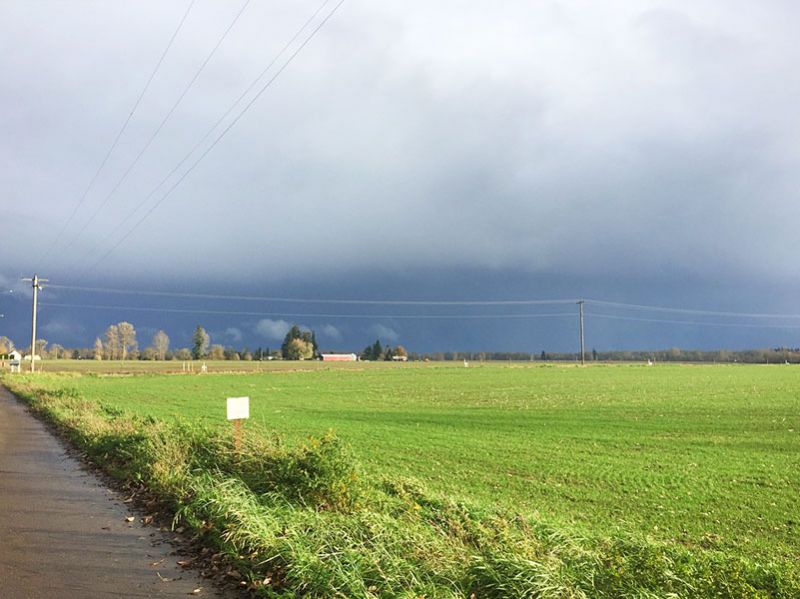One foundation of society entails property rights.
It starts with the right to do what you want with your land. The flip-side is the right to not have a neighbor’s protected activities extend past their boundaries and onto your land, or into land held in trust to support rivers, roads, parks and open spaces.
Land use laws govern where activities and development are allowed. At their heart, they are about: (1) respecting property rights; (2) protecting neighbors from the adverse impacts of adjacent activities. The aims are to: 1) safeguard green spaces and beneficial rural and urban uses; 2) provide certainty to owners and developers about possible uses.
Some of the more contentious Oregon land use issues were birthed in Yamhill County, including several new ones in just the past few years. My goal here is to diagnose the underlying problems with our most bitterly fought decisions and prescribe long-term reforms in response.
1) The Baker Rock gravel quarry on Grand Island.
A significant amount of farm acreage was lost to gravel mining because the expanse of the applicant’s tract was large enough to meet the legal test for a “significant gravel resource,” despite featuring a relatively shallow gravel layer. Other counties require a minimum depth that this site lacks.
2) The siting and expansion of Riverbend Landfill.
While siting of a small, unlined landfill in the Yamhill River flood plain wouldn’t seem reasonable to most people, the county voted multiple times to allow it to expand both vertically and horizontally, over the objections of farmers and neighbors, because it was already there.
3) The permitting of cannabis and grape processing on farmland.
The processing and sale of farm products on farmland runs counter to the goals of the land use system, which call for separating incompatible or potentially incompatible uses to reduce conflict. However, the Legislature has steadily expanded the types of crop processing allowed on farmland over the years.
4) Development of the Yamhelas Westsider Trail on former railroad right-of-way acquired by the county specifically for that purpose.
A county-led rails to trails initiative generated significant pushback from neighboring farmers, despite a history of commissioner and public support. And a change in one commission chair in January tipped the balance, spiking a project in which substantial investment had already been made, some of which must be paid back.
5) A combination mill, bakery and farmstand on land where the grain or the end product would be grown — an enterprise designed to pivot from the price-taker model of traditional farming to a price-maker model.
The farmer-baker team behind the Amity-area project negotiated with land use advocates to limit farm impacts and succeeded to get them to sign off. But a farmer 35 miles away appealed, and the partners could not afford a costly court battle.
Some of these projects, like the landfill, seem to have been forever tied up in appeals. That can happen both sides have enough money and legal help to keep applications moving around among the Land Use Board of Appeals, Oregon Court of Appeals and Oregon Supreme Court.
But with the compromise of land use being certainty for owners and developers and protection for neighbors and the public at large, the fair and just outcome includes a timely decision. How do we make that happen?
First, applications generate controversy, but they are simply the final step in a process that begins with public comment on land use goals, the relevant comprehensive plan and applicable transportation system plans. Since we base our rules on those lengthy and often-obscure documents, we need to foster public opinion at the beginning, before they become a focus of controversy.
First, we need to make the process as accessible as possible. We can assist by hosting evening meetings, translating documents, offering video testimony opportunities, providing childcare and dinner services, and conducting mail surveys. After their adoption, these plans need to be updated regularly so standards of approval are based on what residents want at the time.
Second, while public notices are mailed to adjacent landowners for many applications, one of the most common complaints we get is, “I never heard about this until the last minute.”
Notice is not sent to renters. And in any event, “adjacency” is not enough for major projects.
What’s more, the information provided may include an insufficient basis for relevant comment.
Notices use jargon that can meet legal requirements, but still be confusing. Thorough and timely notification to all people who live near a project, in clear, simple terms and readily accessible formats, helps ensure greater fairness and justice.
Third, the intent of appeal opportunities is also fairness and justice. However, appeals take money. Money can help make the application and hearing process run more smoothly, but can also tie up decisions almost indefinitely sometimes.
Another challenge is that investment of money advocating a position is considered a form of constitutionally protected free expression. The state nonetheless requires disclosure in political campaigns, and it should do the same in land use.
Transparency builds trust, so the public must know who is paying the legal, public relations and expert witness fees. That wouldn’t solve everything, but given sufficient trust, the community might come to regard appeals as part of the process rather than a subversion of the process by monied interests.
Fourth, road capacity and water quality and availability concern neighbors adjacent to proposed projects, especially in regard to processing and sale of farm products on site.
An applicant might expect only 20 trips per day on a quiet road. The cumulative impact of 20 applications might wear the road well beyond its design.
The system currently limits us to considering each application on its own, in isolation. To ensure fairness, justice and safey, we need latitude to consider cumulative pressure on roads.
Like firearms, water is regulated by the state. Neighboring farms and residents should not have their water affected by new developments, but the state does not allow us to deny applications due to lack of adequate water.
We all know that development may affect water for neighbors, especially on a mounting basis. With state approval, we could conduct studies to give us a better sense of groundwater movement, location, quantity and connectivity, and use them as foundations for place-based planning. (See https://ift.tt/3d5qBIC)
Fifth, major siting decisions for non-farm uses should be held to higher standards.
Gravel quarries that destroy farmland should have higher minimum resource depths, for example, and landfills should be barred from riverbanks and productive farmland altogether. Other farm-associated uses, like the proposed bakery, could be held to lower standards.
Sixth, developers and neighbors have a seat at the table. You know who else should? Future Oregonians.
While we cannot hear their comments, decisionmakers have a duty to keep their interests in mind. That will look different in each community, but future Oregonians and their right to a clean place to live should the considered in land use decisions.
I don’t think it is possible to eliminate all controversy from the land use process, as we do have to pick winners and losers. As decision-makers, however, we owe it to people to be straight with them.
Rarely are we setting precedent. Just because we approved one project does not mean we have to approve all similar projects. Each should be judged on its own merits, within the framework of the rules we have to work with.
A just and fair land use system balances the right of owners to make use of their land and the right of current and future Oregonians not to be adversely affected by it. We owe it to you to make our system fair for everyone.
"use" - Google News
April 10, 2021 at 04:09AM
https://ift.tt/3dTldYf
Kulla: Reform Oregon land use to make system fair and just - McMinnville News-Register
"use" - Google News
https://ift.tt/2P05tHQ
https://ift.tt/2YCP29R
Bagikan Berita Ini
















0 Response to "Kulla: Reform Oregon land use to make system fair and just - McMinnville News-Register"
Post a Comment